Nitrogen fertilizers are very popular among gardeners and vegetable gardeners, since their regular use makes it easy to obtain an excellent harvest. However, this type of fertilizer is not safe for the environment, so it should be used in strict accordance with the instructions. It is necessary to purchase fertilizers only in specialized stores, beware of counterfeits and low-quality products.

- Why do we need nitrogen fertilizers?
- Types of mineral nitrogen fertilizers
- Ammonium fertilizers
- Ammonium sulfate
- Ammonium carbonate
- Ammophos and diammophos
- Nitrate fertilizers
- Sodium nitrate
- Calcium nitrate
- Potassium nitrate
- Ammonium nitrate fertilizers
- Ammonium nitrate
- Ammonium sulfo-nitrate
- Calcium-ammonium-nitrate
- Amide
- Urea (urea)
- Calcium cyanamide
- Liquid ammonia
- Anhydrous ammonia
- Ammonia water
- Ammonia
- Urea-ammonium-nitrate fertilizers (UAN)
- Slow-release nitrogen fertilizers
- Encapsulated nitrogen fertilizers
- Nitrification-inhibiting fertilizers
- Urea-formaldehyde fertilizers (UFU)
- Complex nitrogen fertilizers
- Nitrogen-containing organics
- Manure
- Humus
- Peat
- Sapropel
- Early ripening green manure plants
- Application
- General rules
- Application for plants
- How to choose the right one
- in autumn
- in spring
- Top dressing
- Trees
- Flowers
- Strawberry
- Garlic and onion
- Potato
- Tomatoes
- cucumbers
- Lawn
- Houseplants
- Advantages and disadvantages
- Can the use of nitrogen fertilizers be harmful
- To humans
- Negative consequences of applying nitrogen fertilizers to the soil for soil, microorganisms and plants
- Harm to the environment
- Storage
Why are nitrogen fertilizers needed
Nitrogen fertilizers are useful because they help increase crop yields. By using them regularly, you can:
- stimulate the growth of garden and vegetable crops, fruit and berry crops;
- extend the flowering and fruiting period;
- stimulate fruit setting.
They can be used both for feeding plants grown in open ground and for feeding indoor flowers.
Types of mineral nitrogen fertilizers
Mineral nitrogen fertilizers are inorganic and organic substances that contain nitrogen in various concentrations. They are added to the soil in accordance with the instructions, the main purpose of use is to increase the yield of various crops. The main raw material for most nitrogen fertilizers is synthetic ammonia. Nitrogen compounds are highly mobile. If there is little nitrogen in the soil, crops may develop slowly. Timely and regular application of nitrogen fertilizers, on the contrary, has a positive effect on the growth of garden and fruit crops. There are several types of mineral nitrogen fertilizers: ammonia, amide and nitrate.
Ammonium fertilizers
Ammonium fertilizers with different nitrogen concentrations are freely available at any garden and vegetable garden store. The following types are most popular with summer residents:
- ammonium carbonate;
- ammonium phosphate and diammonium phosphate;
- ammonium chloride.
Most preparations have a low cost on the fertilizer market.
Ammonium sulfate
Ammonium sulfate increases frost resistance and natural immunity of plants; it is an inorganic water-soluble substance, composed of nitrogen and sulfur. Fertilizer, dissolving in the soil, stimulates the metabolism of cultivated plants.
Ammonium chloride is used to prolong the fruiting period of crops. It is white or yellowish granules, the main components are nitrogen and chlorine. The fertilizer has good solubility. Cannot be used to feed potatoes and tobacco, as these crops do not like chlorine.
Ammonium carbonate
This is a solid nitrogen fertilizer, the nitrogen here takes the form of ammonium cation. Helps the plant gain additional energy throughout the growing season. It dissolves in water and is applied as root feeding.
Ammophos and diammophos
They contain nitrogen and phosphorus, dissolve in the soil and increase the frost resistance of the crop, as well as increase productivity. Increases the acidity of alkaline soil. Pre-sowing application is preferred.
Nitrate fertilizers
Nitrate fertilizers promote rapid growth and help extend the fruiting period of vegetable and fruit crops. However, the abuse of such fertilizing can lead to the accumulation of a lot of nitrates in the fruits; Eating such products is life-threatening and can lead to severe poisoning with nitrogen salts. Most often, gardeners use the following types of nitrate fertilizer:
- calcium nitrate;
- potassium nitrate;
- sodium nitrate.
Some of these substances are flammable and explosive, so the recommendations for storing the drugs should be strictly followed.
Sodium nitrate
A substance that is highly soluble in water, contains nitrogen and sodium, and is a light gray salt. It is obtained by isolating nitric acid from ammonia. Its main purpose is pre-sowing cultivation and vegetative feeding.
Calcium nitrate
The nitrogen in this substance takes the form of nitrate. It is a hygroscopic, highly soluble salt. Its main purpose is pre-sowing cultivation. Excessive application can cause plant burns, so the instructions for use should be strictly followed.
Potassium nitrate
A complex fertilizer that contains potassium, nitrogen, and phosphorus. Does not contain chlorine, is in the form of salt, and dissolves quickly in water. It is well suited for potatoes, tomatoes, and eggplants; it helps to increase yields. But it is not recommended for fertilizing radishes, cabbage, and greens, as it contributes to the accumulation of nitrates. Ammonium nitrate fertilizers
This type of fertilizer helps to maintain the vitality of plants during the flowering and fruiting period. The following varieties can be purchased in gardening stores:
- ammonium nitrate;
- ammonium sulfonitrate;
calcium ammonium nitrate.
It should be borne in mind that nitrate is highly flammable.
Ammonium nitrate
Universal fertilizer for all crops - flowers, trees, root crops and shrubs. Used when growing seedlings. Not recommended for cucumbers. It is used in the first half of summer. The official name of the substance is ammonium nitrate.
Ammonium sulfonitrate
It has a granular form, contains nitrogen and sulfur. It is applied before sowing in the spring and during the summer if there is not enough sulfur in the soil. Increases the yield and frost resistance of most perennial crops.
Calcium-ammonium-nitrateThe substance, highly soluble in water, contains nitrogen and sodium and is a light gray salt. Obtained by separating nitric acid from ammonia. The main purpose is pre-sowing cultivation and vegetative feeding.
Calcium nitrate
The nitrogen in this substance takes the form of nitrate. It is a hygroscopic, highly soluble salt. The main purpose is pre-sowing cultivation. Excessive application can lead to burns of the plant, so the instructions for use should be strictly followed.
Potassium nitrate
- Complex fertilizer contains potassium, nitrogen and phosphorus. Does not contain chlorine, has the form of a salt, quickly dissolves in water. Good for potatoes, tomatoes, eggplants; helps increase productivity. But it is not recommended for fertilizing radishes, cabbage and greens, as it contributes to the accumulation of nitrates.
- Ammonium nitrate fertilizers
- This type of feeding helps maintain the vitality of plants during flowering and fruiting. The following varieties can be purchased in gardening stores:
ammonium sulfonitrate;

lime-ammonium nitrate.
It should be kept in mind that saltpeter is highly flammable.
Ammonium nitrate
Universal fertilizer for all crops - flowers, trees, root crops and shrubs. Used for growing seedlings. Not recommended for cucumbers. Used in the first half of summer. The official name of the substance is ammonium nitrate.
Ammonium sulfo-nitrate
It has a granular form, contains nitrogen and sulfur. It is applied before sowing in the spring and during the summer if there is not enough sulfur in the soil. Increases productivity and frost resistance of most perennial crops.
Calcium-ammonium-nitrate
A universal complex fertilizer containing nitrogen, calcium and magnesium. It is a pinkish powder. It dissolves in water and is applied to the soil in pre-prepared holes 1–2 cm deep, under the root of the plant. Promotes rapid fruit set.
Amide
In these preparations, nitrogen takes the amide form. Most often, summer residents use urea, or carbamide. Potassium cyanamide also has a good effect. Amide fertilizer has a long duration of action and has a delayed effect.
- Urea (urea)
- Contains a high concentration of nitrogen (46%), the fertilizer looks like small white odorless balls, highly soluble in water. Used in the first half of summer when feeding any vegetable and fruit crops. Increases plant immunity.
- Calcium cyanamide
The fertilizer gradually disintegrates in the soil with the formation of lime, cyanamide and ammonium nitrogen. Ammonium nitrogen is absorbed by plants, and they begin to grow faster and bear fruit more abundantly. Universal fertilizer, popularly known as “black gold”.

Liquid ammonia
It is very convenient to use fertilizers in liquid form, the main thing is to properly dilute them with water. Such preparations are applied at the root of the plant, having previously formed a hole-shaped depression in the ground. They are quickly absorbed and contribute to increased metabolism in plant tissues. In stores you can freely purchase:
ammonia water;
anhydrous ammonia;
ammonia.
We populate the fungus to disinfect the soil: how to properly treat soil with Trichoderma
Ammonia is a toxic substance and can cause burns to mucous membranes. When applying this type of fertilizer, personal protective equipment should be used.if toxic substances come into contact with the skin, wash them off with plenty of water; If necessary, you should consult a doctor for advice.
Anhydrous ammonia
| A colorless liquid containing 80% nitrogen and 20% hydrogen. It is diluted with water and is not washed out of the soil with precipitation. It is well absorbed and helps plants withstand difficult weather conditions. | Ammonia water | This is an aqueous solution of synthetic ammonia. It is used as the main fertilizer; row crops are also fed with ammonia water. Apply throughout the summer. Enriches the soil with ammonium nitrogen. | Ammonia |
| Light yellow liquids, nitrogen content from 30% to 50%. Obtained by adding various solutions to ammonia water. They are introduced into the holes at the root, helping to increase productivity and increase the size of the fruit. | Urea-ammonium-nitrate fertilizers (UAN) | 52% | They are a mixture of aqueous solutions of nitrate and urea. They are diluted in water and applied during watering. They are inexpensive, well and quickly absorbed by the root system. Stimulates fruit set. |
| Slow-release nitrogen fertilizers | A distinctive feature of substances of this type is the cumulative effect. The more the gardener adds them to the soil, the more they accumulate, and the effect becomes noticeable not immediately, but after a certain amount of time. Slow-release nitrogen fertilizers are divided into several types: | 10% | encapsulated; |
| inhibitory; | urea-formaldehyde. | 16% | All three species can be regularly used for feeding as vegetables. and fruit and berry crops, as well as indoor flowers. |
| Encapsulated nitrogen fertilizers | Stimulate vegetation and help increase productivity.Used for cereal crops, increasing the protein content of the grain. Well and evenly absorbed by the soil. Increases the taste of vegetables. | 11% | Nitrification-inhibiting fertilizers |
| They are an aqueous mixture of polymers. They help the plant to absorb ammonium nitrogen without the accumulation of dangerous nitrates in the fruits. Used to feed any vegetable, fruit and berry crops, increasing productivity. | Urea-formaldehyde fertilizers (UFU) | 10% | Obtained through the condensation process of urea and formaldehyde. This is a universal feeding during the growing season. It is advisable to apply in the first half of summer or late spring. |
| Complex nitrogen fertilizers | Complex nitrogen compounds have a beneficial effect on crop growth and stimulate metabolism in plant tissues. | 8% | Name |
| Compound | Nitrogen content | 15% | Scope of application |
| Ammophos | Nitrogen and phosphorus | 20% | Growing vegetables and fruits and berries |
Diammofoska
Growing vegetables
Nitroammofoska
- Nitrogen, phosphorus, potassium, sulfur
- For all types of plants
- Nitrophoska
Nitrogen, phosphorus, potassium
Basic feeding of any crops
Ammonium chloride
Nitrogen, chlorine
Growing fruit and berry crops
Magnesium nitrate
Nitrogen, magnesium
Growing indoor plants in an artificial environment in the absence of soil
Calcium nitrate
Nitrogen, calcium
Plant disease control and disease prevention
Ammonium sulfate
Nitrogen, sulfuric acid
Soil disinfection, pest control
Most complex nitrogen compounds are toxic; when adding them, personal safety rules must be observed.
- Azofoska in spring: features of fertilizer application
- Nitrogen-containing organics
- There are natural fertilizers, you can get them (manure) or make them (humus) yourself at home. Each of them has its own scope of application. Most often, modern gardeners use:
- manure;
peat;
| humus. | The main advantage of these types of feeding is that they do not harm the environment. |
| Manure | 20 |
| Manure is one of the most common and accessible fertilizers containing nitrogen. Organic fertilizer also contains phosphorus, potassium and chlorine. Manure is collected from animal habitats. The most useful manure is horse and rabbit manure; guano (sea bird droppings) also contains a large amount of minerals and trace elements. | 5 |
| Humus | 10 |
| You can get humus yourself. To do this, it is enough to start a compost heap on the site and put weeds there after weeding, as well as other waste. Humus is used to feed vegetables, fruit and berry crops and ornamental plants. Increases soil productivity and frost resistance of some crops. | 100 |
Peat
Peat is a product of the decay of plants that have decomposed due to high atmospheric humidity and lack of air. Can be used for fertilizing and mulching. Helps maintain the vitality of the plant during the growing season. Can be used when growing seedlings.
Sapropel
Sapropel is extracted from rivers and ponds and is a mixture of silt with waste products of fish and other water-dwelling organisms. Promotes rapid fruit set and increased yield. applied before sowing.
Early ripening green manure plants
Application
When feeding vegetable crops, nitrogen fertilizers should be applied at the root, with deep incorporation into the soil. Most drugs are applied in the spring. When spraying, the concentration should be weaker than when applied under the root; otherwise, the plant may get burned.
General rules
Dosage of main types of fertilizers per 1 square meter of soil:
ammonium nitrate – 15 g;
calcium nitrate – up to 50 g;
- urea – 20 g;
- double superphosphate – 15 g.
- You can determine the mass of the drug using the table below.
Unit
Amount of granular or liquid nitrogen fertilizer, g
Matchbox
Tea spoon
Tablespoon
Cup
Most granular substances are highly soluble. To dissolve the powder and dilute liquid nitrogen fertilizers, water at room temperature is used. If you use hot water, the fertilizer will lose some of its beneficial properties.
Application for plants
When feeding vegetable and fruit crops, granular and liquid nitrogen fertilizers are used. Most often they are introduced in the spring, but there are exceptions to the rule.
How to choose the right one
When choosing nitrogen fertilizing, you should take into account the type of plants and their needs, as well as the type of soil. For acidic soil, fertilizers containing sodium or potassium are suitable. For alkaline soil, a nitrogen fertilizer containing sulfur or phosphorus is recommended.
Features of using ammonium sulfate in the spring in the garden
in autumn
In autumn it is recommended to apply superphosphate, ammophos or diammophos. They are used to feed bushes. If the soil is sandy loam, this fertilizer is applied annually; in other cases, once every two years is sufficient. In dry form, fertilizing is applied when frosts have already begun.
in spring
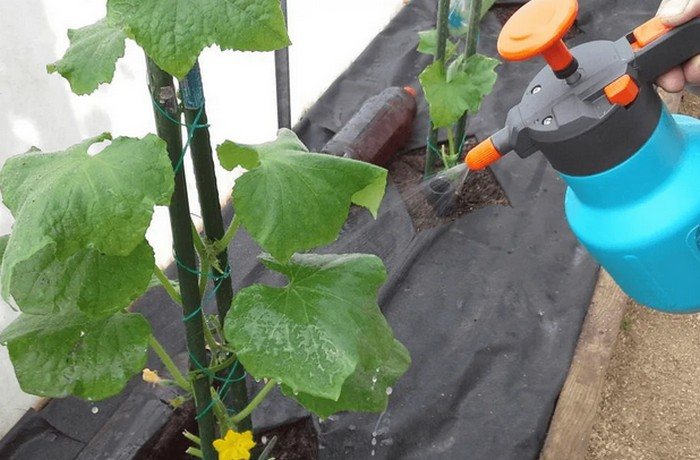
In spring, ammonium, potassium or sodium nitrate (for heavy soils) should be applied. For light soils, the best option is manure, compost or humus. Solid fertilizers are scattered on the ground in a thin, even layer and covered with soil. After this, watering should be done.
Top dressing
To feed various types of plants in winter and autumn, you can use the following techniques and methods of adding nutrients, such as:
watering;
application at the root.
The third option is most often used.
Trees
- The fertilizer is applied to the previously dug tree trunk circle. The recommended dosage is 30 grams of solid fertilizer per 1 square meter of soil. It is recommended to use complex preparations that contain phosphorus and potassium.
- Flowers
- Annual plants need to be fed in two stages. The first stage is two weeks after planting in open ground. The second stage is when the buds begin to form. Liquid fertilizers are diluted in water and applied along with irrigation. It is recommended to use ammonia water.
- Strawberry
Root feeding is carried out using calcium or sodium nitrate. 25 grams of solid matter are diluted in one 10-liter bucket of water at room temperature, and the resulting solution is applied to the soil. The recommended frequency of feeding is once per season.
Garlic and onion
These crops can be fed only at an early stage of development, when the bulbs are just beginning to form. Sodium nitrate or urea is used. A tablespoon of granules is diluted in a 10-liter bucket and added to the soil.
Potatoes
Any complex nitrogen fertilizers that do not contain chlorine are used, since chlorine negatively affects the growth and development of potatoes. One of the best options is ammonium nitrate. A tablespoon is diluted in a 10-liter bucket, calcium carbonate is additionally added. You can also use urea (carbamide).
Tomatoes
In the fall, organic matter is used - manure, humus or peat. In the spring, complex preparations containing phosphorus are recommended: nitrophoska or ammophoska. The amount of fertilizer per square meter of soil is 20 g.
Cucumbers
The best option for this crop is sodium nitrate. It is not recommended to use nitrophos and ammophos, as they contribute to the accumulation of nitrates. Saltpeter is added 10 days after planting seedlings in open ground. One matchbox of solid substance is dissolved in a bucket of water.
Meat and bone meal as a valuable fertilizer in the garden: why and how to use
Advantages and disadvantages
Nitrogen fertilizers are substances that are significantly affected by the activity of soil microorganisms. After fertilizing in the first week, bacteria and fungi consume approximately 70% of the nutrients (the process of immobilization is underway). Plants can absorb nitrogen only after the fungi and bacteria have died, so a lot of nitrogen is wasted. Another reason for nitrogen loss is the leaching of easily soluble ammonium salts and nitrates from the soil profile. Denitrification (loss of nitrogen in gaseous form) and nitrification (nitrogen goes into nitrates, then they are removed) are also common occurrences. Therefore, the efficiency of nitrogen fertilizing at best (very rarely) is 50%, no more.


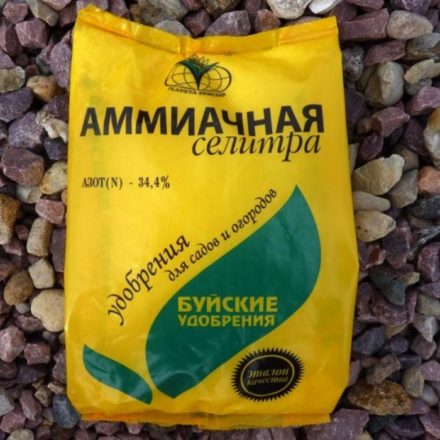
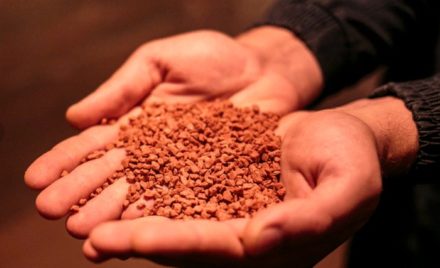
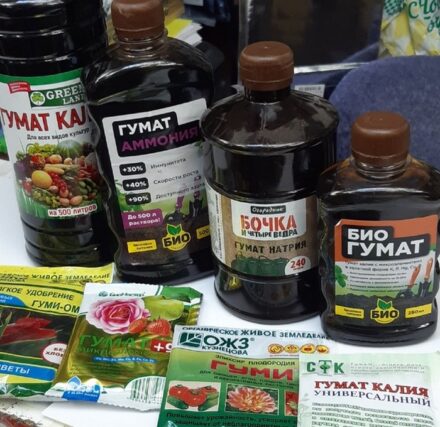
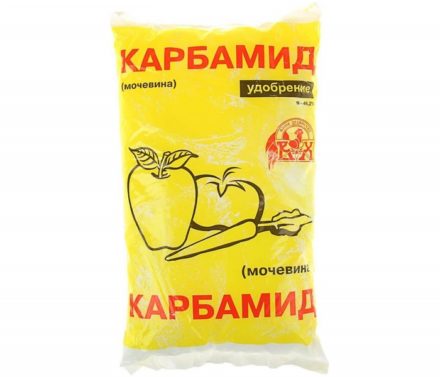


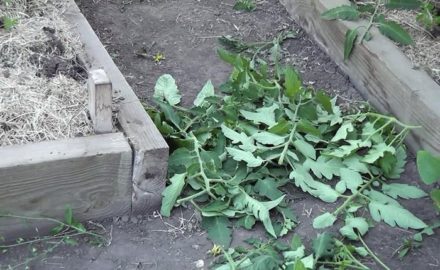
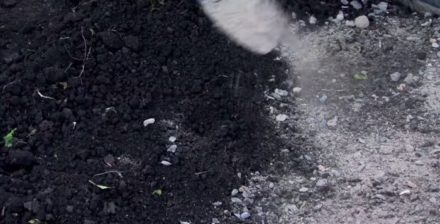
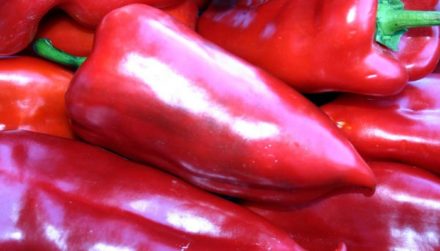
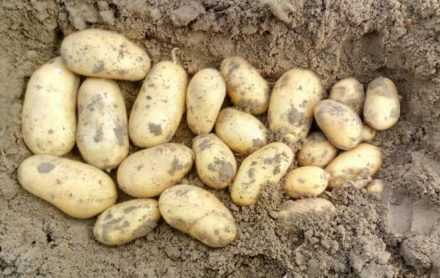
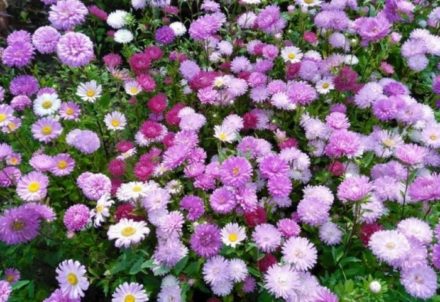
What nitrogen fertilizers do you use?